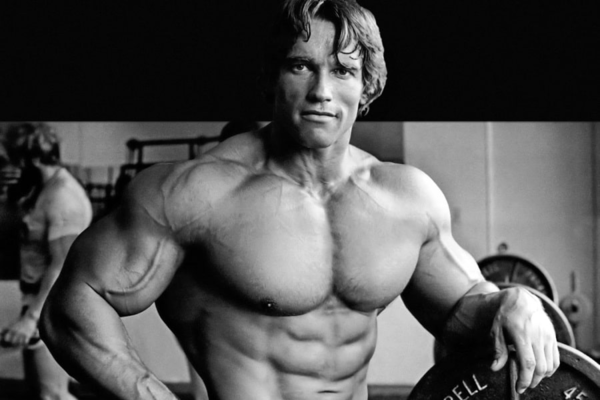Getting your brain swole: Building your action-taking muscle

Welcome back to the Effortless Action Newsletter! Every Wednesday, I share findings from across a range of disciplines to better understand “What gets us to take action?”
How can we build our action-taking muscle?
Unfortunately (well, probably fortunately) our brain isn’t an actual muscle, but what if we trained it like one?
The awesome part is that we can do it with just small steps every day, leading to huge gains over time. But how, you may ask?
Enter: progressive overload.
Progressive overload is one of the keys to getting swole, and we can use the principles to help train our action-taking muscles.
What is progressive overload?
Progressive overload is all about using your muscles to exhaustion (overload) and bumping up your weight each day (progressive).
You start out at a certain weight, and do your reps for the day. You rest, and let your muscles recover. The next time you come back, you lift a little bit of a heavier weight. You write that down, rinse, and repeat.
Every day, you show up and do something a little bit harder than last time. It’s no crazy feat, and not totally overwhelming, but in a few months’ time, you’re lifting heavier than anything you’ve lifted before.
Soon enough, you get to Schwarzenegger levels of buff.

How can we leverage these same principles for taking action?
It starts with breaking it down into two steps: starting, and improving.
Start small
Imagine you enter the gym for the first time and see some buff dude doing curls with 50s. He finishes his set, places them back on the rack, and you walk over. You try to pry them off the rack, but it takes your whole body just to get them to move.
You say “I guess I’m just weak” and head home.
Crazy, right?
But we do the same exact thing when it comes to taking action. We look at people who are later in the process and see all of the work they get done in a day, all of the healthy habits they do, and all that they’re able to accomplish.
Meanwhile, us “lazy” people are doom-scrolling on social media and thinking about all our lives could be.
They’re the same situation. Chad McBuffy at the gym wasn’t born with muscles, he slowly built them over time, by showing up and progressively overloading. Same thing with the high-achievers, the prolific creators, and the serial entrepreneurs.
Regardless of natural ability, there’s one thing we all have in common:
You have to start where you are.
This means starting small, setting yourself up for success. For Chad, it looks like picking up the 5s for his first-ever set of curls. For you, that may look like starting with just one habit each day.
Lower the barrier to entry as much as possible, to make it laughably easy to get your first rep in. Once you get your first rep, have practiced that habit consistently for a week or two, then we can move on to the next step.
Make measurable improvements
Now the fun begins.
We have a little bit of momentum, we got started. It’s time to increase the weight.
This is where real muscle building happens. Chad doesn’t get buff by lifting 5s at the gym every day. He increases each time, first to 7.5, then to 10, and a year later, he’s lifting those 50s with the same effort he lifted those 5s with.
The small increase each time is difficult, it takes a bit of work. But his muscles respond. Each day they grow bigger, rising to the challenge that’s brought to them.
Our brains are these muscles.
Once we learn to manage one habit, we can tack another on. It’s not easy, but it’s a lot easier than starting from 0. Soon enough, we have 10 habits a day, managed effortlessly.
The important part here is that it needs to be measured.
Keep track of your time, your habits, and how you’re improving. Schedule time to do weekly reviews. Check in with yourself to see how you feel. Can you add more? Do you need less right now?
When we don’t track how we’re doing, what we’re accomplishing, or how we’re feeling, it’s difficult to understand the bigger picture. When we don’t feel like showing up that day, we have a history of measurements to give us the motivation to push through.
Not only that, but it’s easy to get lost in the day to day without seeing how far we’ve actually come. Feeling these small wins and tracking our progress is instrumental to a consistent drip of dopamine and thus, motivation.
Bonus Tips
Don’t actually overload your brain.
Our brains aren’t as simple as our muscles, we can’t just go to the point of exhaustion and still be able to function. Instead, still push yourself, try to do better than you did yesterday, but make sure that you have plenty of self-acceptance, self-care, and time to rest built in.
Leverage systems and tools.
This is like using an exoskeleton to help us lift weights. The better tuned our systems and tools are to help us with our daily habits, the easier taking action will be. Interested in this? Let me know and I’ll expand on this more in the future!
When you fall into a rut, stop digging.
If you fall into a mental health slump, or something happens in the uncontrollable world that throws you off, then the best thing to do is take a step back, rest, and reset. It may feel like losing progress, but growing your muscles back up to where they were will be a lot easier the second time around.
Onto you…
Start where you are, and start tracking your progress. What daily action do you plan on starting with? How will you track it? What habits will come next? When will you review your progress?
Know where, when, and how, and take the smallest, first step today.
Thanks for reading!
Hey you. Thanks for reading to the bottom!
If you enjoyed this, there’s much more to come. I’d love to hear your feedback, you can simply reply to this email.
I hope you have a wonderful day, and as always, I’ll work on creating a catchy phrase to end this newsletter with. (Just one more rep.)



